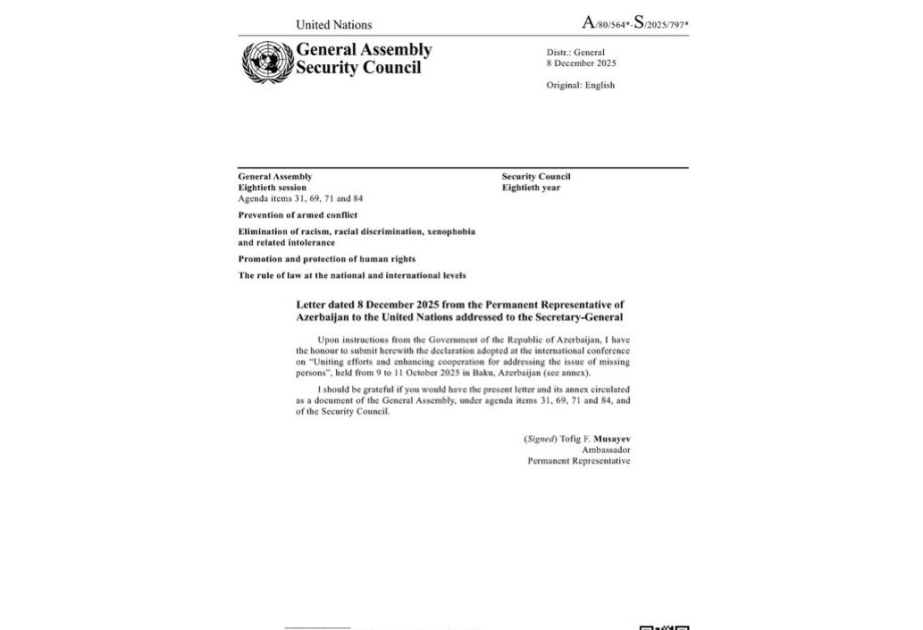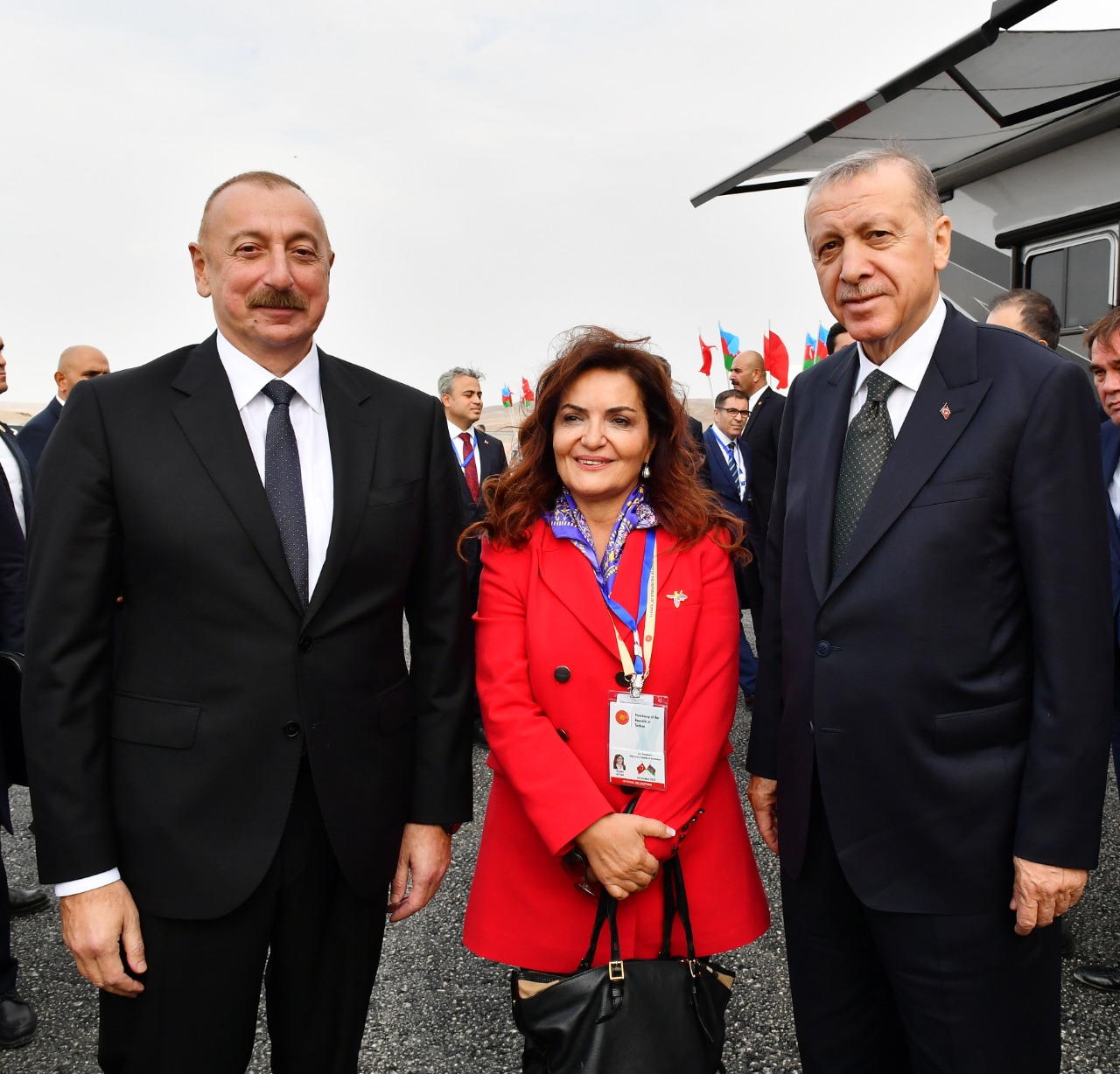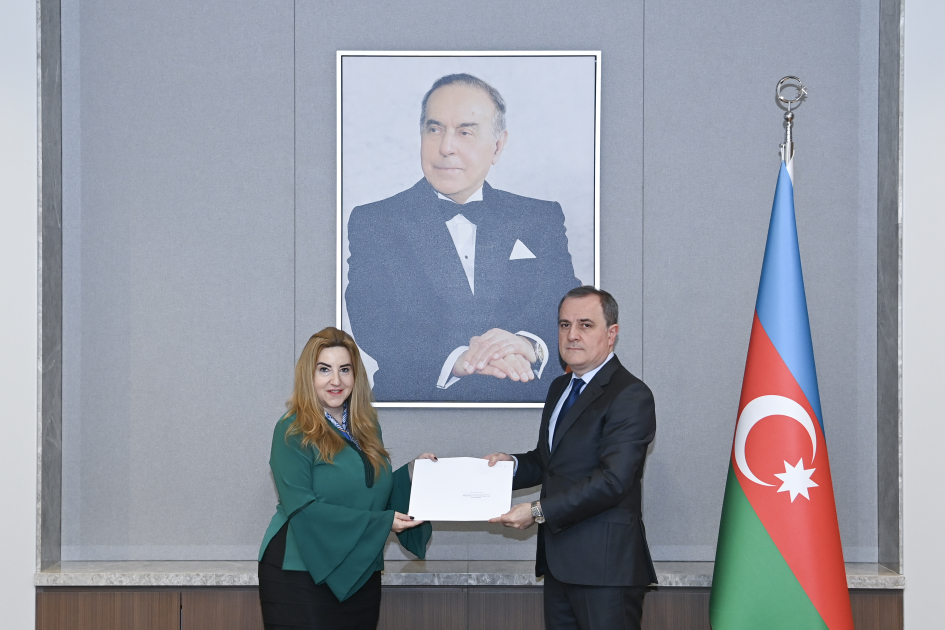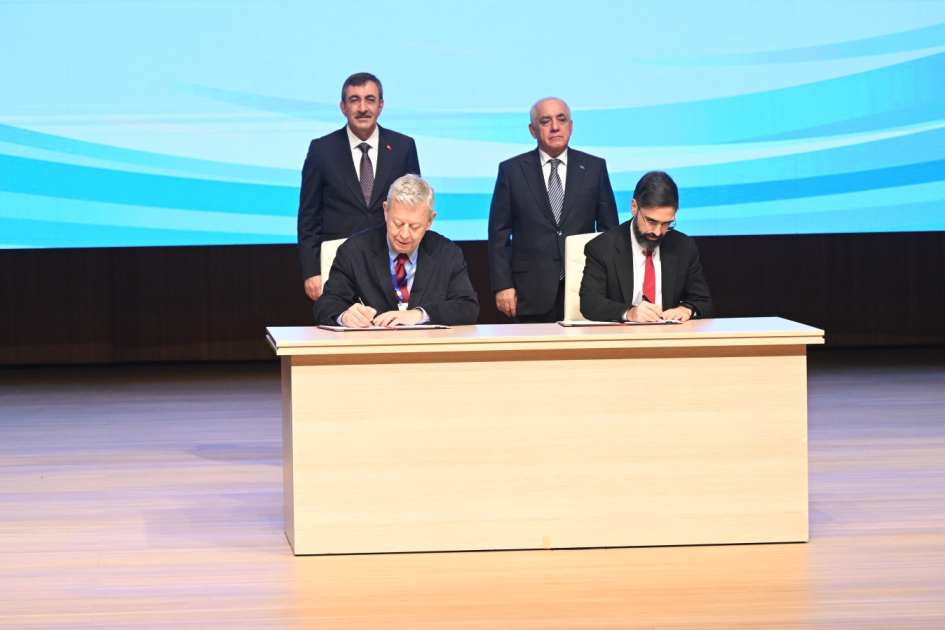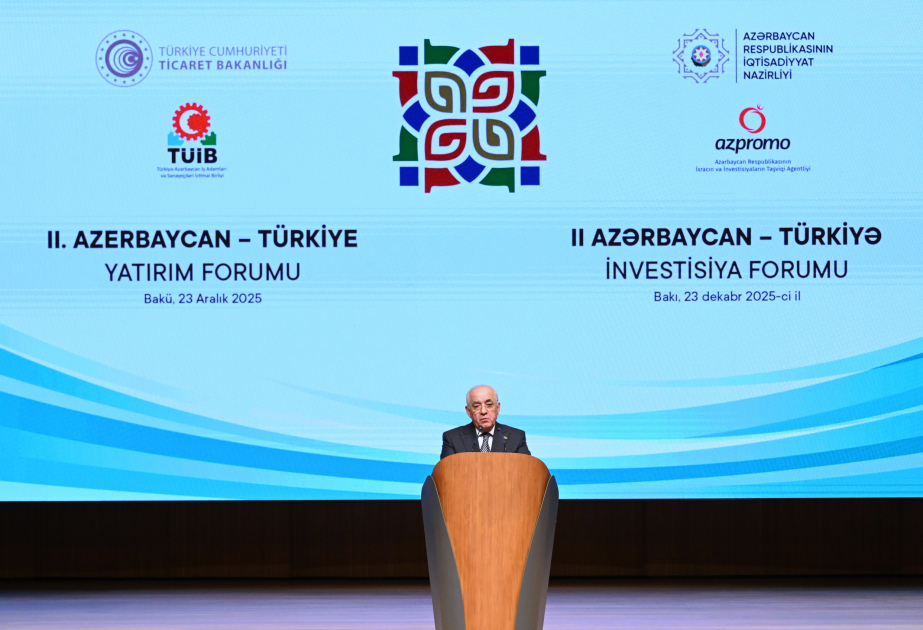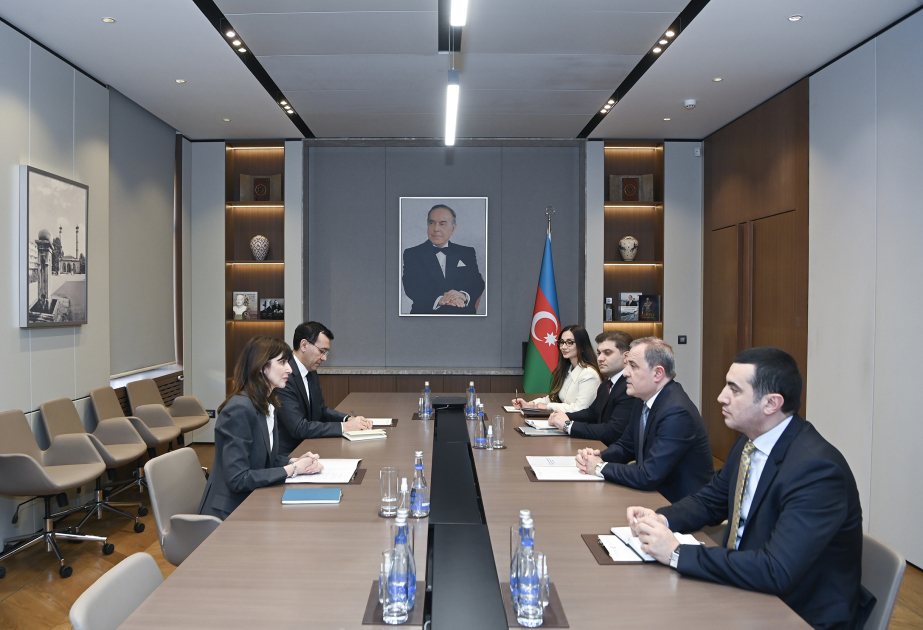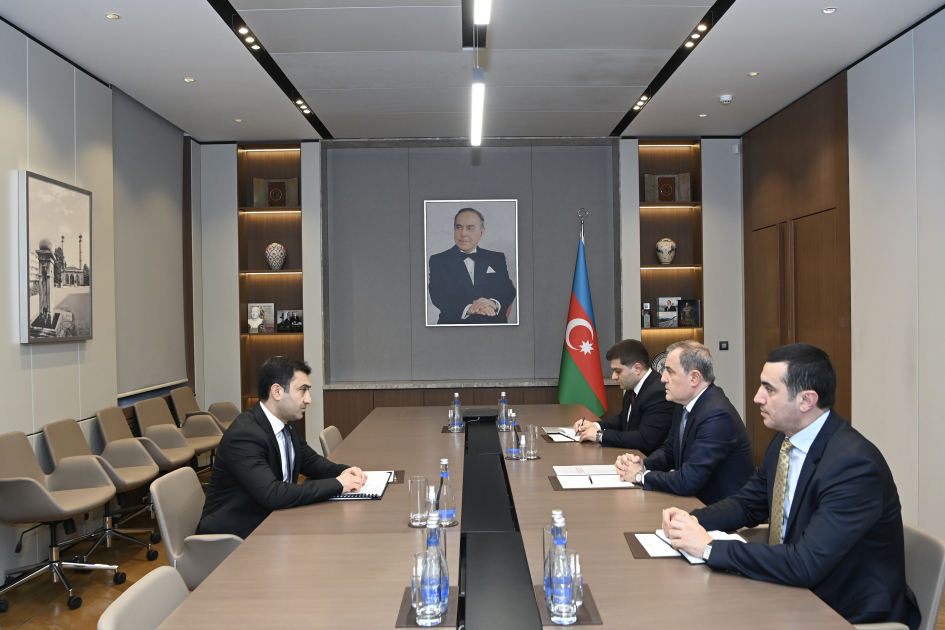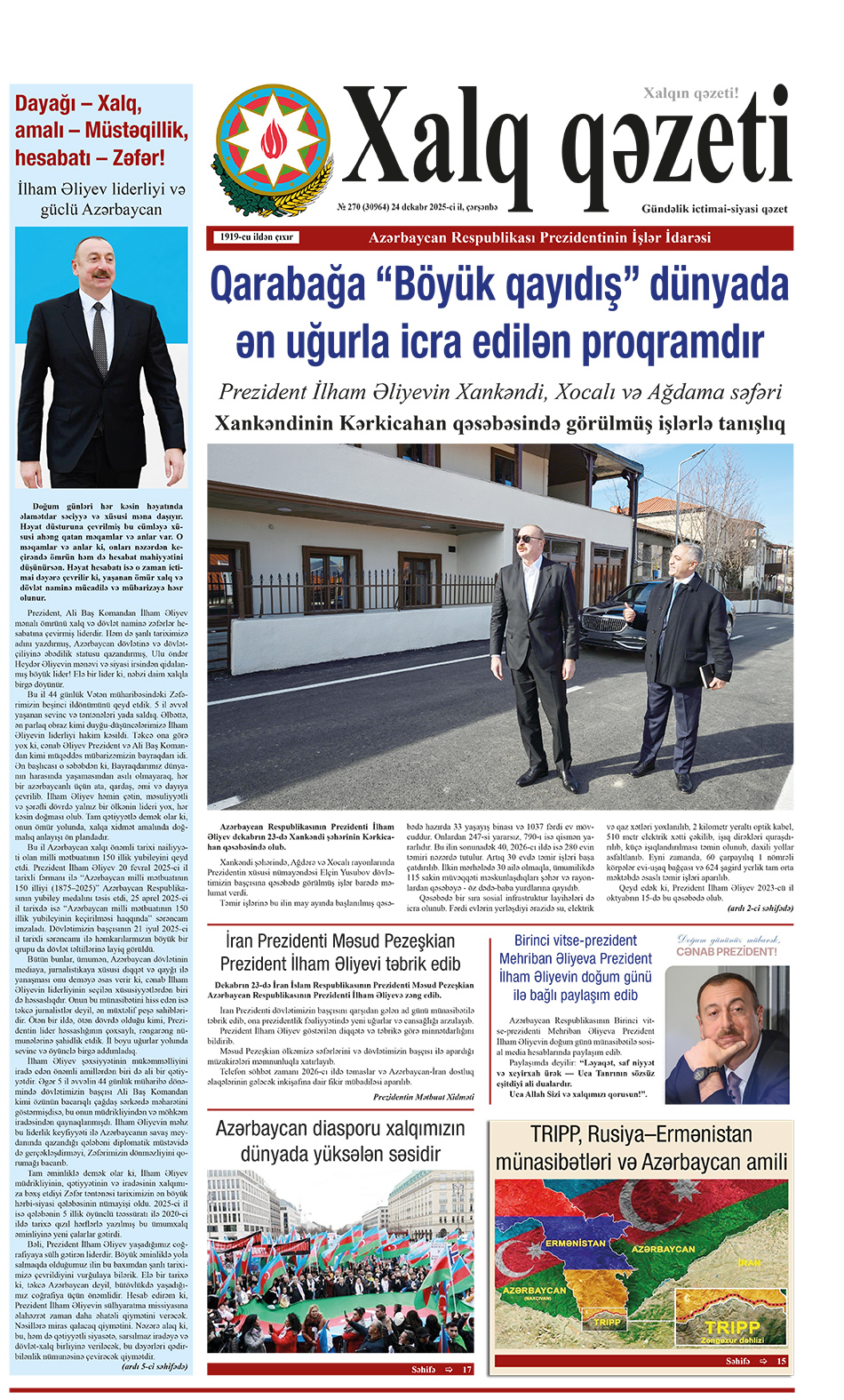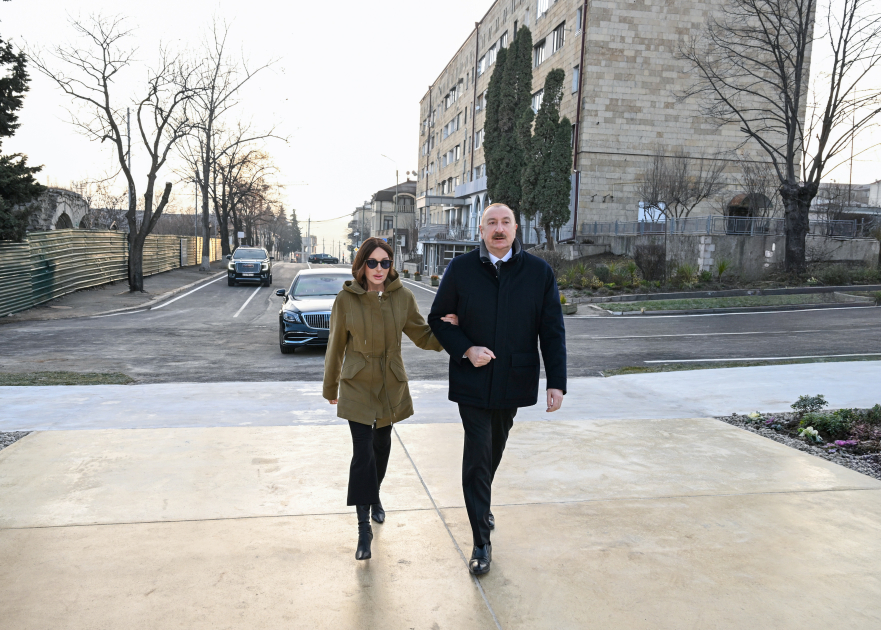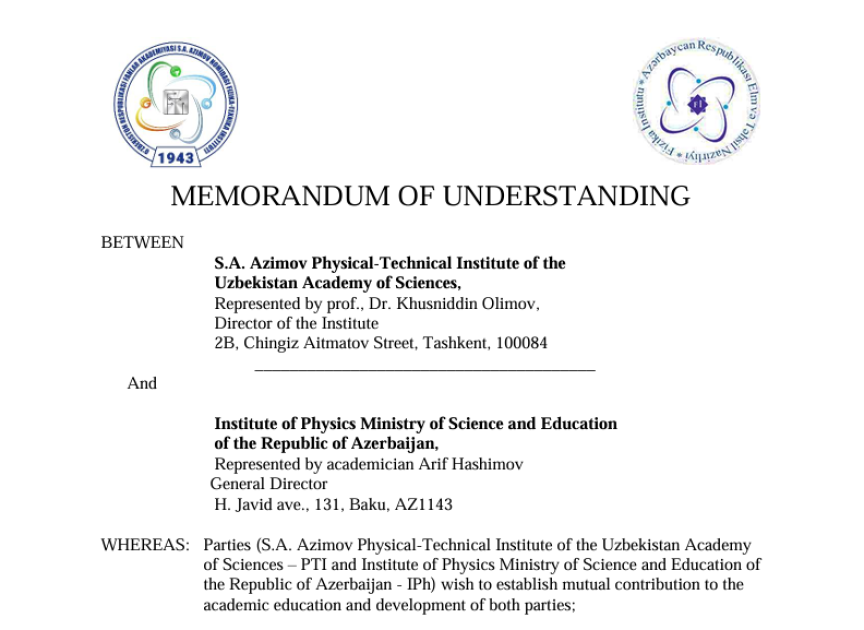Article IV
History should be accepted, understood and appreciated as it is.
Heydar Aliyev,
National Leader
Outside initiatives
In the previous article, we emphasized the need to look at the forms of regional integration in the South Caucasus in the context of the formation of the world's new security architecture. This formulation of the issue is relevant for two reasons. The first reason is related to the important role of regions in the new security architecture. The second reason is related to the geopolitical and political conditions of the ability of different forms of integration to create a system on an interregional scale in the prism of the uniqueness of each region.
Looking at the forms of regional integration in the South Caucasus in the light of these two reasons, we cannot see a single unification model here. At the beginning of the 90s of the last century, the order for the integration of the region came mainly from the West. Also, the European Union showed special zeal. From 1992-1993, the conceptual basis of the EU's South Caucasus policy was laid. The organization began to implement this within the framework of several programs. In that context, in 1993, the TRACECA program was started in Brussels as the transport corridor "Europe-Caucasus-Asia" - "Restoration of the Historical Silk Road". This program was a part of the TACIS program called technical assistance to CIS countries. All three states of the South Caucasus were included in this program.
The fact that the EU started establishing relations with the regional states in this form indicated several peculiarities. Above all, the organization sought to integrate primarily in its own interests. Then, conducting this process cautiously, he approached the relations with the South Caucasus states, taking into account Russia and China. But Brussels pursued a strategy of keeping Russia out of these processes from the very beginning. This meant entering into conflict with the CIS, of which the South Caucasian states are members. Subsequent processes have shown that this issue can cause deep difficulties for the countries of the region. In that context, a situation created by the EU made Azerbaijan a geopolitically sensitive place. We mean the intentions of the West to cooperate in the field of energy. It is in that direction that the West tried to solve the transport routes bypassing Russia in its favor. Azerbaijan, with its balanced position, was trying to create a realistic cooperation environment. In the presence of this potential conflict, the EU tried to develop relations with the countries of the South Caucasus.
Thus, in 1994-1995, the EU prepared a document reflecting the strategy of relations with the countries of the South Caucasus. In that document, relations with the region were explained in terms of energy interests. With this, an important aspect of the West's view of the South Caucasus became concrete. It seemed that energy security would be a priority for Europe.
Along with these, a geopolitically important direction of relations began to show itself. This is related to the EU's individual approach to the states of the South Caucasus. On that basis, in 1996, the Partnership and Cooperation Agreement was signed with all three states of the region. That agreement entered into force in 1999. Thus, two directions were united in the West's strategy for the South Caucasus - the goal of creating a region-wide environment against the background of mutual relations with national states was set.
So, by the beginning of the 21st century, a concrete approach to the integration format of the West in the South Caucasus had already been formed. The main goal here was to expand relations with individual states of the region and make them a common "European environment".
But they forgot two geopolitical points in Brussels. One of them was related to not properly taking into account the Russian factor. The other was related to not taking into account the aggression of Armenia in the South Caucasus. Specifically, Europeans saw the aggressor and the victim of aggression in the same political mold. This meant that the regional reality was not taken into account, and for that reason no integration format could be successful.
Let's note here that one of the facts confirming the West's approach to the integration process in the South Caucasus from the prism of its own interests was the attempts to form regional organizations. In that aspect, the organization called GUÖAM, established in 1997, is interesting. This included Azerbaijan, Georgia, Moldova, Ukraine and Uzbekistan. Then Uzbekistan left the organization and GUAM remained. Apparently, Armenia was not in this organization. However, for Brussels, the main role of GUAM was to reduce the dependence of member states on Moscow by creating an energy-transport route bypassing Russia. This did not work until the end. Against this background, the CIS seemed more stable, but this organization also failed to create a real integration process in the South Caucasus. The main obstacle was Armenia's aggression against Azerbaijan, and then Russia's attack on Georgia was added to it.
In 2004-2008, the USA tried to dominate the South Caucasus. There were certain results. However, there could be no talk of a stable integration model in its full sense. Subsequent processes also showed that Washington's regional cooperation formats are not efficient and fair, and do not take historical reality into account.
"Caucasus House" and regional security
One point must be taken into account here. Back in the 90s of the last century, there was an attempt to create a "Caucasus House" consisting of the countries of the region at the initiative of the leadership of Azerbaijan and Georgia. On March 8, 1996, the great leader Heydar Aliyev and the President of Georgia E. Shevardnadze signed the document "On peace, stability and security in the Caucasus region" in Tbilisi. It is called "Tbilisi declaration". The document emphasizes that "Caucasus is our common home. Our duty is to make it a peaceful, prosperous region..."
In that document, in addition to bringing regional cooperation to the forefront, cooperation with other organizations was given ample space. Cooperation in the region was supposed to be formed based on mutual benefit and equal relations. This document was actually the philosophy of establishing relations in the direction of cooperation and stability in the entire region of the two states of the South Caucasus at the modern historical stage. "Caucasus house" could be considered as the first real regional idea in this geopolitical aspect. The absence of Armenia here was an issue that could be resolved in the future. The Second Karabakh War showed that sooner or later Armenia will also behave according to the idea of "Caucasus House".
However, due to certain reasons, this idea was also left unfinished. As a first experience, it retains its importance. In addition, there were other proposals and attempts (for example, the idea of "Caucasus OSCE" by E. Shevardnadze, etc.). However, none of them has a format covering all three South Caucasus countries.
TDT: breathing new life into collaboration and security
In the background of these, it is necessary to emphasize the formation of an organization that can have a positive effect on the South Caucasus. We mean the Organization of Turkic States. Although this includes only Azerbaijan from the South Caucasus, the geopolitical benefit of its activity serves mutual benefit, geopolitical and energy security, and stability in the region as a whole. This shows that TDT is an organization that can connect regional security and global security as a whole.
We will analyze this aspect of the issue further. Let us emphasize here that in addition to the great victory achieved in the Second Karabakh war, the successes achieved by TDT in regional and interregional cooperation played no small role in President Ilham Aliyev's bringing up the idea of "Caucasus House" again. As a member of this organization, Azerbaijan is very active in cooperation and security in a wide geopolitical space! President Ilham Aliyev skillfully leads in this direction!
First generalizations
We do not see the need for a broader comment on regional cooperation and security in the South Caucasus. Because the main point here is related to explaining the philosophical and geopolitical meaning of the cooperation formats highlighted above. It seems that the proposed regional cooperation formats, with the exception of one example from the 90s of the last century, were not adequate to reality. With the collapse of the Soviet Union, the West tried to take the initiative of cooperation formats in the South Caucasus. Several programs have also offered. However, the main flaw here was that the EU and the US prioritized their own interests. Its main manifestation was related to not taking into account Armenia's aggression against Azerbaijan. Against this background, they created obstacles for Azerbaijan to restore its territorial integrity and fully achieve sovereignty. In such conditions, it is impossible to talk about any real and sustainable regional cooperation. Therefore, the issue of regional security architecture remained open.
Another point is related to Russia's reaction to these processes. Since Russia also tries to maintain the conditions of traditional dominance, it has not been able to offer an adequate offer for real regional cooperation. Against this background, it is not at all convincing that Moscow can create a real regional security model. Processes prove it!
Iran has always balanced waiting and maintaining its interests. After the Second Karabakh war, he had to openly express his true intentions. Official Tehran does not actually propose any integration model in the South Caucasus and does not try to do so. Its main goal is to maintain the traditional situation. Therefore, he cannot go a step further than the thesis that "Armenian border is our red line". Time will show the real result of his recent attempts to establish certain relations with Azerbaijan.
However, Iran's aid to Armenia, the Armenians' turning a blind eye to the desecration of religious and cultural monuments, attempts to terrorize various people in Azerbaijan, and the terrorist attack on the Azerbaijani embassy are still remembered in people's memory.
These two trends that we have highlighted have not only benefited cooperation and security in the South Caucasus, but have even made the situation even more complicated. Russia's active regional rivalry with the West, China's policy in the background, and Iran's adherence to the logic of "everyone except the Turks" have formed a complex and risky picture. In itself, this seems quite dangerous against the background of increasingly relevant security architecture on a global scale. Figuratively speaking, the South Caucasus has "fallen into the security note".
But there is a glimmer of light. There is a suggestion of a collaborative format that could be a way out. Also, it looks very promising in the aspect of formation of regional and global security architecture.
(to be continued)
Fuzuli GURBANOV,
XQ analyst, doctor of philosophy


.jpg)
